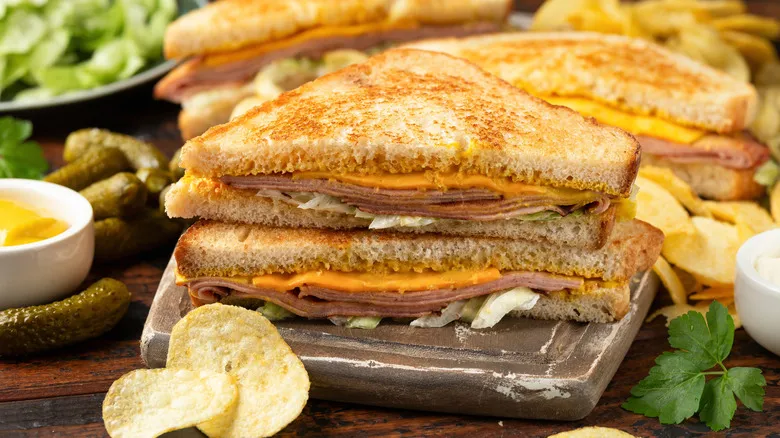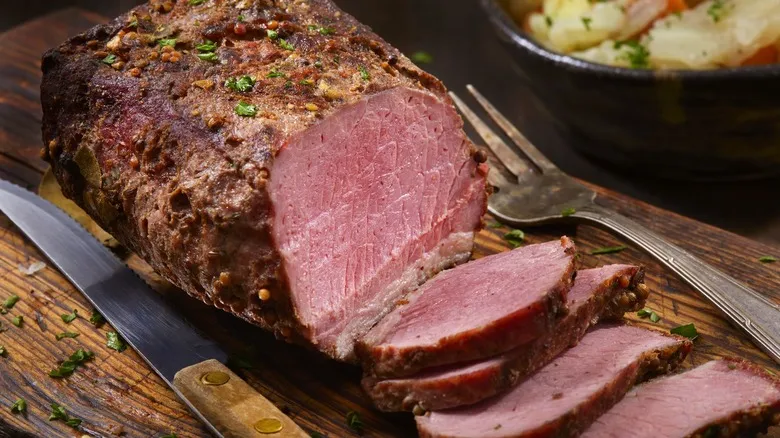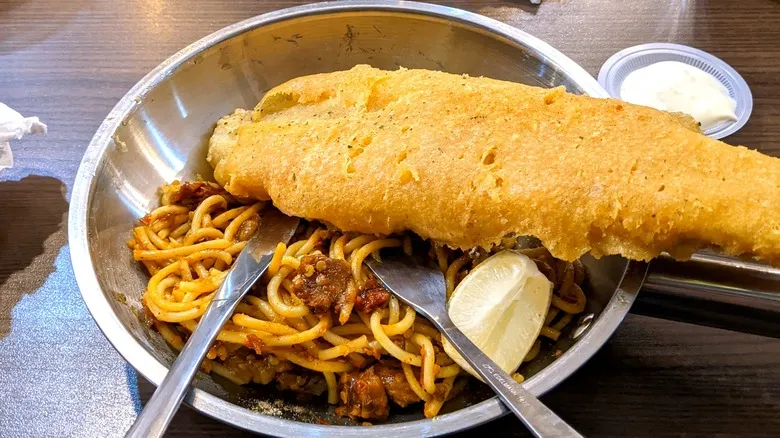Bologna, baloney, and mortadella are closely related

The USDA categorizes bologna as a "cooked and/or smoked sausage." Chunks of beef, pork, or chicken are heated and mixed into a smooth paste, which is then shaped into the pink discs we commonly recognize as bologna. In the United States, this paste must be consistent, free of visible fat, and adhere to specific ratios of meats, fats, water, and non-meat binders.
However, its origins are quite different. In the Italian city of Bologna, a similar but more flavorful predecessor known as mortadella has been satisfying appetites for centuries, as evidenced by historical and archaeological findings. Mortadella is a labor-intensive, high-quality product. Hand-mincing the meat requires skill, and the seasonings used are precise. The production process was officially established by the papacy in 1661, and even today, Italian mortadella is made according to strict guidelines: it must consist of high-quality pork (with no other meats allowed) and contain visible chunks of fat, meat, and spices.
Bologna became the informal term for similar finely chopped sausages that could not be legally labeled as mortadella. The term "baloney" is an American invention, derived from the word bologna in the mid-1800s, and it appeared in humorous songs and articles based on dialect. It wasn't until the 1920s that "baloney" also came to signify a falsehood. Although a popular Oscar Mayer advertisement from the 1970s featured a child singing about their "baloney," the product itself is officially labeled as bologna.
Bologna sandwiches are still everywhere

In the 20th century, a series of events—including the Great Depression, the growing popularity of sandwiches in the 1920s, and the widespread use of deli meat slicers—propelled bologna to become a leading choice for sandwich meats. After World War II, the appeal of processed and packaged foods increased, and by the mid-1960s, bologna sandwiches were a staple in school lunch programs. A few years later, Jerry Ringlien, the former VP of marketing, noted that Oscar Mayer was selling as much bologna as it was hot dogs.
Bologna sandwiches also found their way into various institutions, including the prison system, and were provided to Mexican farm laborers brought to the U.S. through the Braceros program in the 1940s and 1950s. Interestingly, researchers aboard the submersible Alvin packed bologna sandwiches for a failed deep-sea expedition in 1968. However, by the late 1990s, sales began to decline as consumers gravitated toward meals they considered healthier. Nevertheless, bologna sales tend to rise during economic downturns.
Overall, bologna still has a loyal following. At Lil Red, a James Beard-nominated, Black-owned barbecue restaurant in Seattle, you might find smoked, fried bologna sandwiches on the menu, alongside Jamaican spiced jerk pork and curry chicken. At Salty Lunch Lady's Little Luncheonette in Queens, New York, you can savor an upscale bologna (more akin to mortadella) sandwich on crusty bread with aged provolone. Meanwhile, Robert's Western World in Nashville offers The Recession Special: a fried bologna sandwich, chips, a Moon Pie, and a Pabst Blue Ribbon beer for just $6. Or, you can elevate your sandwich the Southern way: fried and loaded with toppings.
Recommended

Why Corned Beef Was Once Reserved For Royalty In Ireland

Where Did The Pairing Of Fried Fish And Spaghetti Originate?

How Did The Wedge Salad Become A Steakhouse Staple?

The Food Traditions That Make Kwanzaa's Feast So Meaningful
Next up





